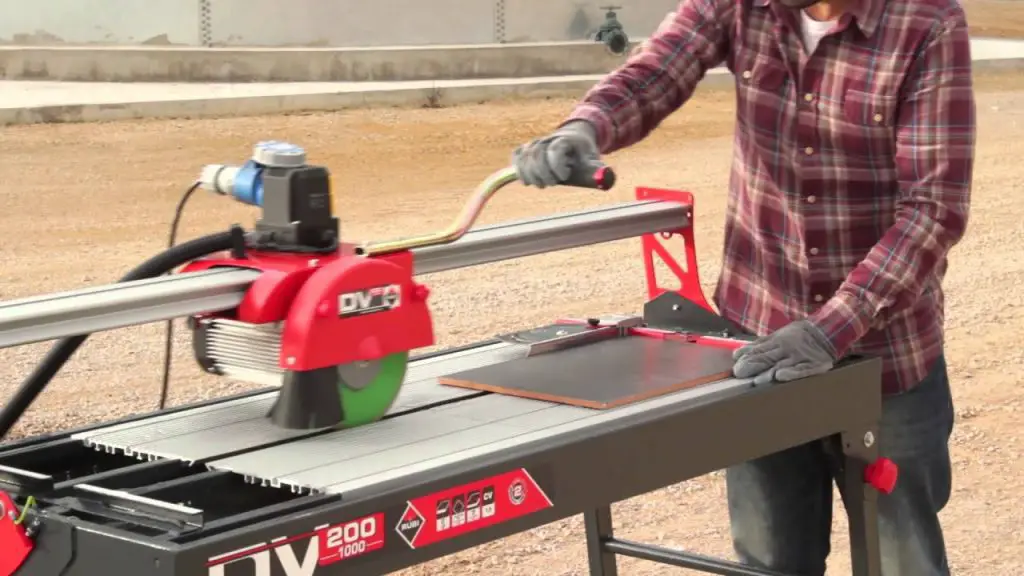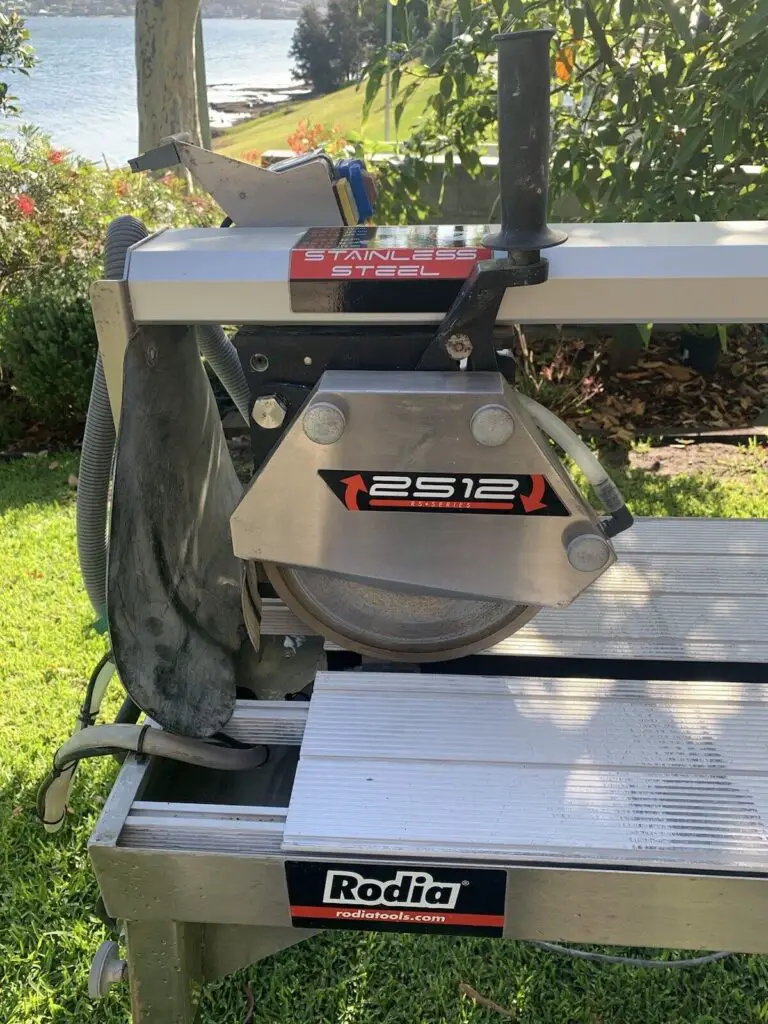The type of tile saw you need depends on the project size, tile material, and required precision. For small projects, a manual tile cutter or snap cutter may suffice. For larger tasks, cutting porcelain or natural stone, or requiring high precision, a wet tile saw with a diamond blade is recommended.
When it comes to a tile project such as the bathroom and kitchen, your tools must be as much a consideration as the tile itself. These two rooms are the most expensive parts of your house, and to get things done correctly, ask yourself, what type of saw do I need?
Taking this task upon yourself is a great way to go. Instead of exhausting funds on labor, you can finish the job yourself and save more money to buy better-quality tiles. In addition, more budget can be dedicated to investing in those high-quality cabinets or fixtures.
The project is rewarding, and returns results about 24 hours after settling the tiles in. Similar to hiring only the best labor for the task, it is significant that you choose the right tile saw for the job.
Table of Contents
Things to Consider When Choosing a Tile Saw
A pair of nippers or manual tile cutters may help you out to an extent. However, they’ll make your job comparatively difficult regarding larger tiles, mosaics, or making advanced-level cuts. In such a case, a good tile saw is an efficient and easier time saver.
Whenever you are about to select a tile saw, keep in mind there are diamond blades that differ in power, water reservoir, and beds. All the different factors determine the efficiency of the tile saw and compatibility for the job.
Types of Tile Saw
There are many different types of tile saws that are all suited for different projects and scenarios:
| Type of Tile Saw | Suitable For |
|---|---|
| Handheld Wet Tile Saws | Used to make small, precise cuts or to shape tiles. Not designed for cutting entire tiles, but it can be handy for making adjustments or for detailed work. |
| Tabletop Wet Tile Saws | Ideal for small jobs, quick cuts, or spaces where a larger saw would be impractical. Not ideal for large jobs or for cuts that require high precision. |
| Overhead Motor Wet Tile Saws | Used to make small, precise cuts or to shape tiles. Not designed for cutting entire tiles, but it can be very useful for making adjustments or for detailed work. |
| Sliding Table Tile Saws | Provide a high degree of precision and are often used for larger or more complex jobs that require detailed or precise cuts. |
| Snap or Rail Cutters | Quick, efficient, and ideal for straight cuts on ceramic tiles. Not suitable for thicker or harder materials like porcelain or stone. |
| Diamond Blade Tile Saws | Ideal for cutting through hard materials like stone, marble, or porcelain. |
| Masonry Saws | Designed for heavy-duty jobs and can cut through brick, concrete, and other hard materials. |
| Plunge Cut Tile Saws | Designed to make plunge cuts for outlets or vents in tile installations. They are versatile tools that can handle complex cuts. |
| Tile Grinders | Used to make small, precise cuts or to shape tiles. Not designed for cutting entire tiles, but it can be very useful for making adjustments or detailed work. |
Design Features
Here is a table of important design features and their purpose so you can judge whether your specific project requires them:
| Design Feature | Description |
|---|---|
| Bevel Capability | Allows the saw to make angled cuts, useful for corners and borders. |
| Water Recirculation System | Some saws have a cutting head that can be adjusted to different heights, allowing for different tile thicknesses. |
| Adjustable Cutting Head | It helps ensure precise, straight cuts. |
| Laser Guide | Helps ensure precise, straight cuts. |
| Detachable Side Extension | Useful for supporting larger tiles. |
| Dust Collection System | Some tile saws have a dust collection system to minimize dust and debris. |

Tile Type
Just as you pick up the fruit before the knife, knowing the type of tile you use influences your choice of tile saw. Some tiles can be cut easily, while some require extra features.
For instance, ceramic, porcelain, and glass tiles are easy to work with, and almost any tile saw can do the job. On the other hand, marble is comparatively softer, and a regular tile cutter won’t do them any justice.
Similarly, natural material tiles like stone can be dusty and make it impossible to see what is happening between all that mess. For dusty materials, a wet saw might be the most suitable option.
Blade Quality
Poor blade quality will leave you with a poorer budget and frustration. That is to say, if you are unfamiliar with the blade quality and pick up anything, you will be chipping off a lot of the tiles.
In addition, the process will be slow and full of headaches. Spending on purchase should make tasks easier for you, but picking a bad blade will cost more than you have already paid.
Budget-friendly tile saws are prone to wobbling while making cuts, which can lead to inconsistent cuts. Moreover, they wear out comparatively quicker. In other words, you may be frustrated, struggling, and unable to achieve perfect results.
But don’t blame yourself. It’s the blade’s fault; a better investment or upgrade should do the trick.
Cut Accuracy and Quality
It is essential to understand that tile saws are not just a pair of blades on a motor. There are tile saws that come packed with extra features to provide quality and accuracy.
Tiled rooms are expensive, and the quality of the saw and accuracy determine whether you can achieve the design you have in mind or not. Handheld and grinding tile saws are often for the skilled only, but some models come with laser guides and attachments to help you glide.
On the other hand, wet saws are available with guides and sliding beds to hold the tile in place, while cutting.
Water Feed
Even though this may be more of an “optional” element, a water feed can make the cutting process more enjoyable.
For dusty works, a water feed can stop harmful particles from spreading in the air and your lungs while keeping the blade cooled down. However, their equal trade is messy water splashes.
Furthermore, some saws rely on the blade dipping in water basins and have no feed. On the contrary, it is crucial to consider how water feeds on the saw blade.
A good choice would be going with the pumps, which are efficient, and plenty of water directly reaches the cut. Their downside is that they can be expensive.

How to Choose the Right Tile Saw
There is nothing technical going on behind the scenes. When choosing the right tile saw for your project, here are some guidelines you can follow:
- Learn from others – find articles and blogs on the internet where people share their experiences using various tile saws,
- Evaluate – Search and compose a list, compare the tile saws, and narrow it down to the one that best fits your requirements and skill level,
- Scalability – is your project a single room or multiple rooms around the house? What capacity do you need?
- Features – compare capacity, durability, price, motor size, and pump.
The Verdict
Finally, when it comes down to choosing the right tile saw, it is similar to making any other online purchase. In other words, various tile saws are available to choose from. There are reputable brands available and budget-friendly tile saws, but it depends significantly on the nature and scale of the project.
The decision will require some research on your end and some practice to grasp the basics. There are plenty of tutorials and guides to assist you along the journey.
However, it is in your best interest to only go for the best tile saws, as they will offer you the flexibility to serve in multiple projects. Whether you are a DIYer looking for a reliable solution or acquiring a new skill set, choosing the best matters.
Making the correct investment will give you a longer service life with high accuracy and quality cuts to various tile thicknesses and materials. Moreover, the best will come ready for heavy-duty projects and higher durability.
